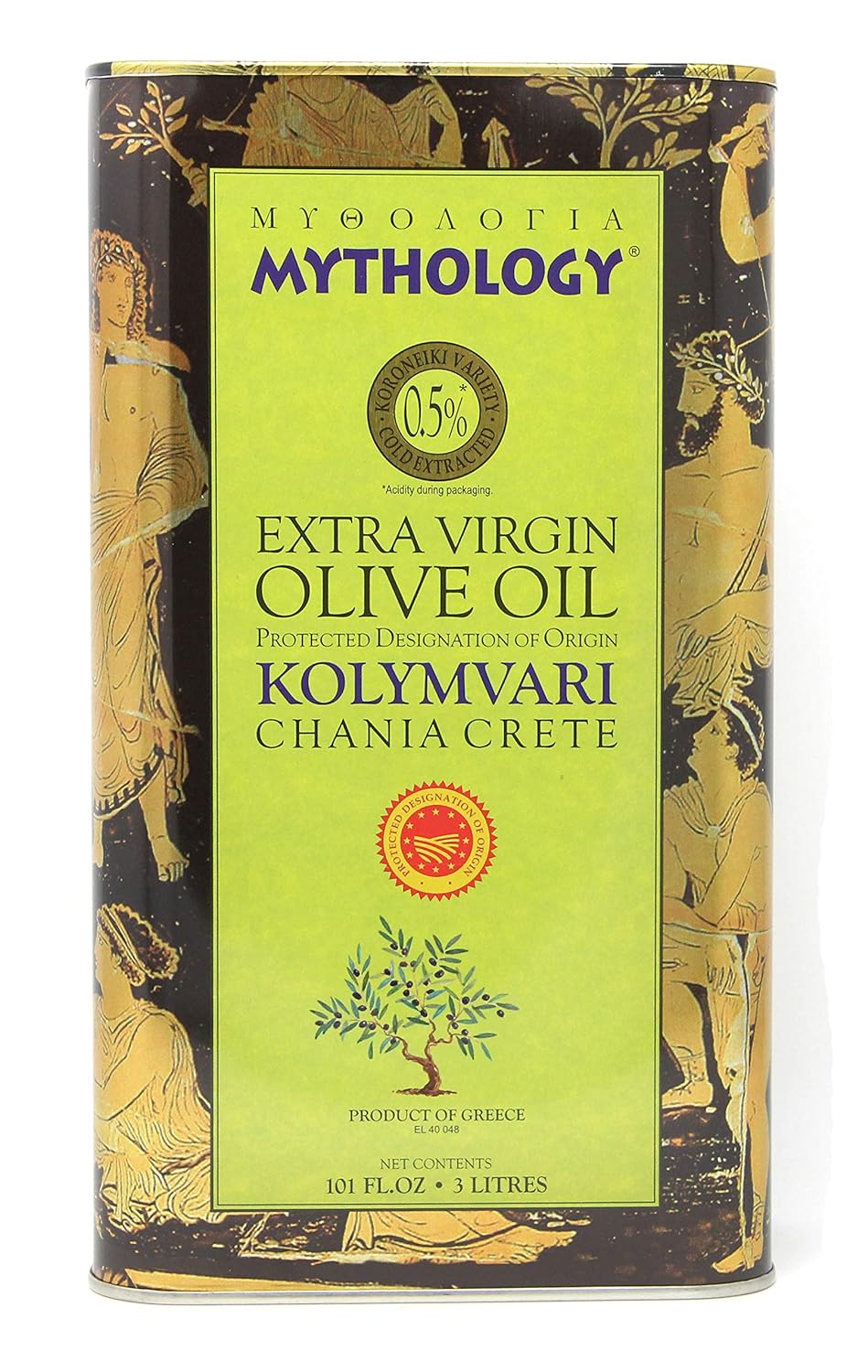Have you ever wondered what makes the classic Margherita pizza so irresistible? From its origins in Naples, Italy, to the specific ingredients and cooking methods that create its unique taste, this iconic dish has captivated the hearts and taste buds of pizza lovers around the world. Prepare to embark on a culinary journey as we uncover the authentic flavors and traditional preparation techniques that make the Margherita pizza a true gastronomic masterpiece.


Key Takeaways
- The Margherita pizza originated in Naples, Italy, in the late 19th century, and is named after Queen Margherita of Italy.
- San Marzano tomatoes, fresh mozzarella cheese, and basil are the traditional toppings that define the authentic Margherita pizza.
- The crust for a Margherita pizza is made with 00 flour, yeast, and water, and is cooked in a wood-fired oven to achieve the perfect texture and char.
- Attention to detail and high-quality ingredients are crucial for recreating the true flavor of a Margherita pizza at home.
- The Margherita pizza is a testament to the rich culinary heritage of Italy, with its simplicity and quality ingredients making it a beloved classic worldwide.
What is it about the Margherita pizza that has made it a culinary icon, and how can you capture the essence of this legendary dish in your own kitchen? Discover the answers as we explore the fascinating history, essential ingredients, and time-honored preparation methods that define the authentic Margherita pizza.
Exploring the diverse pizza scene in Greece reveals a delightful blend of traditional Greek flavors with classic Italian pizza-making techniques. Greek pizza stands out with its unique toppings and flavors, making it a culinary experience distinct from its Italian counterpart. Popular spots like the top 5 pizza places in Athens and Thessaloniki offer a variety of options, from the authentic Margherita pizza to creative versions made with homemade dough. Discover whether pizza in Greece is better than Italy and indulge in the rich, savory taste of Greek pizza.
Origins of the Classic Margherita Pizza
The Margherita pizza traces its roots back to the city of Naples, Italy, where it was first created in the late 19th century. According to legend, the pizza was named after Queen Margherita of Italy, who visited Naples in 1889 and was served a pizza featuring the colors of the Italian flag: red tomatoes, white mozzarella, and green basil. The simple yet flavorful combination quickly became a beloved classic, representing the essence of traditional Neapolitan cuisine. This iconic margherita pizza has since spread worldwide, captivating the hearts and taste buds of pizza enthusiasts everywhere.
The origins of the Neapolitan pizza date back to the 18th century, when the dish was a staple food for the working-class people of Naples. In 1866, Francesco De Bourcard documented the most commonly used pizza toppings in the city, which included basil, tomatoes, and thin slices of mozzarella. This early version of the Margherita pizza laid the foundation for the iconic dish that would later emerge.
The pizza Margherita is believed to have been created in June 1889 by pizzaiolo Raffaele Esposito, the chef at Pizzeria Brandi in Naples. The dish was named in honor of the Queen of Italy, Margherita of Savoy, and the Italian unification that had occurred just a few decades earlier. The simple yet delicious combination of ingredients, reflecting the colors of the Italian flag, quickly gained popularity and became a symbol of Italian cuisine.
The enduring appeal of the Margherita pizza can be attributed to the rich cultural heritage and traditions that underpin its preparation. The pizza history of Naples is deeply intertwined with the evolution of this iconic dish, which has become a source of pride and a testament to the culinary excellence of the region.
Traditional Ingredients for an Authentic Margherita Pizza
To create an authentic Margherita pizza, the key is to start with the finest ingredients. At the foundation of this iconic dish are San Marzano tomatoes, a variety of plum tomatoes prized for their rich, sweet flavor and low acidity. These tomatoes are often canned and imported directly from the Campania region of Italy, where they are grown under optimal conditions.
Another essential component is the creamy buffalo mozzarella cheese, made from the milk of water buffalo. This soft, delicate cheese provides a subtle flavor and texture that perfectly complements the other ingredients. Alongside the mozzarella, fresh basil leaves add a fragrant, herbaceous note, while high-quality extra virgin olive oil contributes a flavorful richness to the overall dish.
| Ingredient | Importance |
|---|---|
| San Marzano Tomatoes | The foundation of the Margherita pizza, known for their sweet, low-acid flavor. |
| Buffalo Mozzarella | Provides a creamy, soft texture and subtle flavor to the pizza. |
| Fresh Basil | Adds a fragrant, herbaceous contrast to the other ingredients. |
| Extra Virgin Olive Oil | Contributes a flavorful richness and enhances the overall taste of the pizza. |
By carefully selecting and combining these traditional ingredients, the Margherita pizza showcases the simplicity and quality of Italian cuisine, allowing the natural flavors to shine through and create a truly authentic dining experience.
Making the Perfect Margherita Pizza Dough
Crafting the perfect pizza dough is a crucial step in the process of creating an authentic Margherita pizza. The foundation of the dough is “00” flour, a finely ground Italian flour that produces a light, chewy crust. The dough also requires yeast and water from the city of Naples, as the local water is believed to contribute to the unique flavor and texture of the crust.
Proper kneading techniques are essential for developing the dough’s structure and allowing the yeast to work its magic. The result is a thin, pliable crust that can withstand the high heat of a wood-fired oven without becoming too crisp or burnt.
| Ingredient | Quantity |
|---|---|
| Unbleached All-Purpose Flour | 2½ cups (300 g) |
| Rapid Rise Yeast | 1 teaspoon |
| Sugar | 1 tablespoon |
| Salt | 1 teaspoon |
| Olive Oil | 2 teaspoons |
| Warm Water (105°F to 115°F) | 1 1/4 cup |
The dough recipe provided makes either four 8-inch pizzas or two 12-inch pizzas. Any extra dough can be stored in the fridge for up to 3-5 days in an air-tight container. Rapid Rise yeast is recommended for a quicker rise time of about 1 hour, while Active Rise yeast requires a longer rise time of about 3 hours.
Assembling the margherita pizza
Once the dough is prepared, the assembly of the Margherita pizza begins. The first step is to spread a layer of the crushed San Marzano tomatoes over the dough, leaving a slight border around the edges. Next, the fresh mozzarella cheese is carefully arranged in a mosaic pattern, ensuring that each slice receives an even distribution. The final touch is the addition of whole fresh basil leaves, which are placed atop the cheese. A drizzle of high-quality extra virgin olive oil completes the dish, providing a subtle richness and enhancing the flavors of the other ingredients.


Cooking the Margherita Pizza in a Wood-Fired Oven
The traditional method for cooking a Margherita pizza involves the use of a wood-fired oven, which can reach temperatures of up to 900°F (480°C). To prepare the oven, the wood is ignited and allowed to burn down to create a bed of hot embers. The pizza is then swiftly transferred to the oven floor, where it cooks in just 60-90 seconds, turning occasionally to ensure even baking. The intense heat of the wood-fired oven creates a crisp, charred crust while keeping the interior light and chewy, a defining characteristic of authentic Neapolitan-style pizza.
| Statistic | Value |
|---|---|
| Oven Preheating Temperature | 850°F |
| Baking Time for Crispy Bottom | 3-4 minutes |
| Social Media Shares | 19 |
| Pizza Stone Temperature | 700°F (370°C) |
| Recommended Pizza Stone Size | 13 inches |
| Wood-Fired Oven Cooking Time | Less than 90 seconds |
| Dough Hydration Level | 66% |
| Kitchen Oven Cooking Temperature | 550°F |
| Kitchen Oven Cooking Time | 8 minutes |
| Mozzarella Cheese Quantity | 90 grams |
| Pizza Diameter | 11 inches |
The intense high temperature baking in a wood-fired oven is the key to achieving the perfect Margherita pizza. The extreme heat creates a crisp, charred crust while keeping the interior light and chewy, a hallmark of authentic Neapolitan-style pizza.
Serving and Pairing Suggestions
Enjoying the authentic flavors of a freshly baked Margherita pizza is a true sensory experience. The steaming hot pie, with its glistening mozzarella, fragrant basil, and slightly charred crust, should be savored immediately after it comes out of the oven. To complement the rich, umami-forward flavors of the pizza, a refreshing beverage is often recommended, such as a crisp Italian lager or a light, acidic white wine. The simplicity of the Margherita pizza allows the high-quality ingredients to shine, making it a perfect pairing for a variety of complementary beverages that can enhance and balance the overall taste.
| Pizza Variety | Recommended Wine Pairing |
|---|---|
| Margherita | Dry Rosé |
| Supreme | Prosecco |
| Meat Lovers | Cabernet Sauvignon or Malbec |
| Cheese | Pinot Noir or Chianti |
| Pepperoni | Sangiovese or Cabernet Franc |
| Veggie Lovers | Chardonnay or Lambrusco |
| BBQ Chicken | Malbec or Pinot Noir |
| Hawaiian | Riesling |
| Truffle and White Sauce | Merlot |
| Prosciutto and Arugula | Sparkling Rosé |
| Breakfast | Cava or Champagne |
| Dessert | Sauvignon Blanc |


Margherita Pizza in Neapolitan Tradition
The Margherita pizza is deeply rooted in the culinary traditions of Naples, Italy, where it has been a staple for over a century. In Neapolitan culture, the art of pizza-making is revered, with specific techniques and standards that have been passed down through generations. The Margherita pizza is considered the quintessential representation of this proud culinary heritage, showcasing the simplicity and quality of the region’s finest ingredients.
From the carefully curated dough recipe to the meticulous assembly and baking process, every aspect of the Margherita pizza reflects the dedication and passion of Neapolitan pizza makers, who have elevated this dish to an iconic status within Italian cuisine. The origins of the Margherita pizza can be traced back to 1889, when it was created by the Neapolitan pizzaiolo Raffaele Esposito, who is said to have named it in honor of Queen Margherita of Italy.
While the legend surrounding the creation of the Margherita pizza has been the subject of some debate, the dish’s enduring popularity and significance within the Neapolitan pizza tradition is undeniable. The pizza’s simple yet flavorful combination of San Marzano tomatoes, fresh mozzarella, and fragrant basil has captivated the hearts and taste buds of pizza enthusiasts around the world, solidifying its place as a beloved icon of Italian cuisine.
Recreating the Margherita Pizza at Home
While the wood-fired oven method is the traditional way to prepare a Margherita pizza, it is possible to recreate the authentic flavors and textures at home using alternative cooking methods. When scaling down the recipe, it’s important to maintain the proper ratios of the key ingredients, such as the tomatoes, mozzarella, and basil. Home cooks can use a conventional oven, or even a grill, to achieve results that closely mimic the characteristics of a wood-fired oven, such as a crisp, charred crust and bubbly, melted cheese. With the right techniques and high-quality ingredients, it’s possible to enjoy the delicious taste of a Margherita pizza in the comfort of your own kitchen.
| Cooking Method | Pros | Cons |
|---|---|---|
| Wood-Fired Oven | Achieves authentic Neapolitan-style crust and char | Requires specialized equipment and high-heat setup |
| Conventional Oven | Offers alternative cooking method for home chefs | May not achieve the exact same level of crust and char |
| Grill | Provides a unique, smoky flavor profile | Requires careful monitoring to prevent burning |
When using alternative cooking methods, it’s crucial to focus on maintaining the proper ingredient ratios and high-quality, fresh components. Experimenting with different oven temperatures and cooking times can help home cooks achieve the closest possible approximation of the Margherita pizza’s signature texture and flavors.
“With the right techniques and high-quality ingredients, it’s possible to enjoy the delicious taste of a Margherita pizza in the comfort of your own kitchen.”
By embracing scaling ingredients and exploring alternative cooking methods, home chefs can recreate the authentic essence of the Margherita pizza, bringing a taste of Naples to their own kitchens.
Variations on the Classic Margherita Recipe
While the classic Margherita pizza is a cherished and revered dish, there are various regional and personal interpretations that have emerged over time. Some chefs and home cooks may experiment with different toppings, such as adding cured meats like prosciutto or salami, or incorporating unique cheeses like burrata or stracciatella. Others may play with the pizza’s shape, creating a square or rectangular version rather than the traditional round pie. Additionally, some variations may include additional herbs, such as oregano or rosemary, or a drizzle of balsamic glaze or honey for a touch of sweetness. However, these creative twists on the Margherita pizza still pay homage to the dish’s Neapolitan origins and the love for its classic flavors.
| Pizza Variation | Description | Key Ingredients |
|---|---|---|
| Prosciutto and Arugula Margherita | A modern twist on the classic, featuring cured prosciutto and fresh arugula leaves | Prosciutto, arugula, San Marzano tomatoes, mozzarella, olive oil |
| Burrata Margherita | Showcases the creamy, luxurious texture of burrata cheese alongside the traditional Margherita ingredients | Burrata, San Marzano tomatoes, basil, olive oil |
| Rectangular Margherita | A unique take on the classic, featuring a rectangular-shaped crust and a slightly different proportions of toppings | San Marzano tomatoes, mozzarella, basil, olive oil |
| Balsamic-Drizzled Margherita | The classic Margherita pizza with a sweet and tangy balsamic glaze drizzled over the top | San Marzano tomatoes, mozzarella, basil, balsamic glaze, olive oil |
| Herb-Infused Margherita | A variation that incorporates additional herbs, such as oregano or rosemary, for a more robust flavor profile | San Marzano tomatoes, mozzarella, basil, oregano/rosemary, olive oil |
These creative interpretations of the Margherita pizza showcase the versatility of this beloved dish, while still honoring the authenticity and simplicity that make the classic version so iconic.
The Enduring Appeal of Margherita Pizza
The Margherita pizza has enjoyed an enduring popularity that spans generations and transcends borders. This iconic dish has become a symbol of Italian culinary excellence, captivating the hearts and taste buds of pizza lovers around the world. The simplicity and quality of the Margherita’s ingredients, combined with the rich cultural heritage and traditions that underpin its preparation, have contributed to its lasting appeal.
As a testament to its timeless allure, the Margherita pizza continues to inspire chefs and home cooks alike to recreate and reinterpret this beloved classic, ensuring that its legacy will endure for generations to come. The pizza’s representation of the Italian flag’s colors, its humble origins as a street food, and its ability to bring people together have all contributed to its status as a symbol of Italian identity and the “la dolce vita” lifestyle.
Whether enjoyed in a bustling pizzeria or savored on a park bench, the Margherita pizza remains a beloved and enduring part of the Italian cuisine and culture. Its popularity has only continued to grow, as evidenced by the rise of gourmet pizza trends and the transformation of the pizza industry through online ordering and food delivery. The Margherita pizza has truly become a global phenomenon, captivating the hearts and taste buds of pizza enthusiasts everywhere.
The debate over whether pizza in Greece rivals that of Italy is intriguing, with some arguing that Greek pizza offers a unique twist that sets it apart. Greek pizza is known for its thicker, chewy crust and a generous topping of ingredients, which differs from the thin, minimalist approach often found in Italian pizza【Is Pizza in Greece Better Than Italy?】. A popular variation is the Greek Margherita pizza, which blends the simplicity of traditional Margherita with Greek flavors like fresh oregano and feta cheese【Margherita Pizza】. For those interested in trying Greek pizza at home, a good starting point is making homemade dough, which provides a sturdy base for the rich toppings【Homemade Dough】. Whether you prefer the traditional Italian style or the hearty Greek version, both offer delightful experiences for pizza lovers. For recipes and more insights on Greek pizza, visit Greek Pizza.
FAQ
What are the key ingredients in an authentic Margherita pizza?
How did the Margherita pizza get its name?
What makes the Neapolitan pizza dough unique?
How is a Margherita pizza traditionally cooked?
What are some common variations of the classic Margherita pizza?
How can you recreate the authentic Margherita pizza at home?






Online Store: This post contains affiliate links. If you use these links to buy something, we may earn a commission at no extra cost to you.


Grill Philosophy Greek Recipes and Grilling
YouTube Channel: Grill Philosophy Explore traditional Greek recipes and grilling techniques with Grill Philosophy on Cooking with Greek People.
Author: Bob
With over 20 years in Bioinformatics and AI in Molecular Diagnostics, Bob Stavrou advises BiCos, focusing on authenticating OLIVE OIL DNA. He's also a passionate contributor to YouTube Cooking with Greek People and appeared on Greek TV show Savvatokiriako Me Ton Manesi, bridging science and culinary arts. Watch it on Alpha TV.



